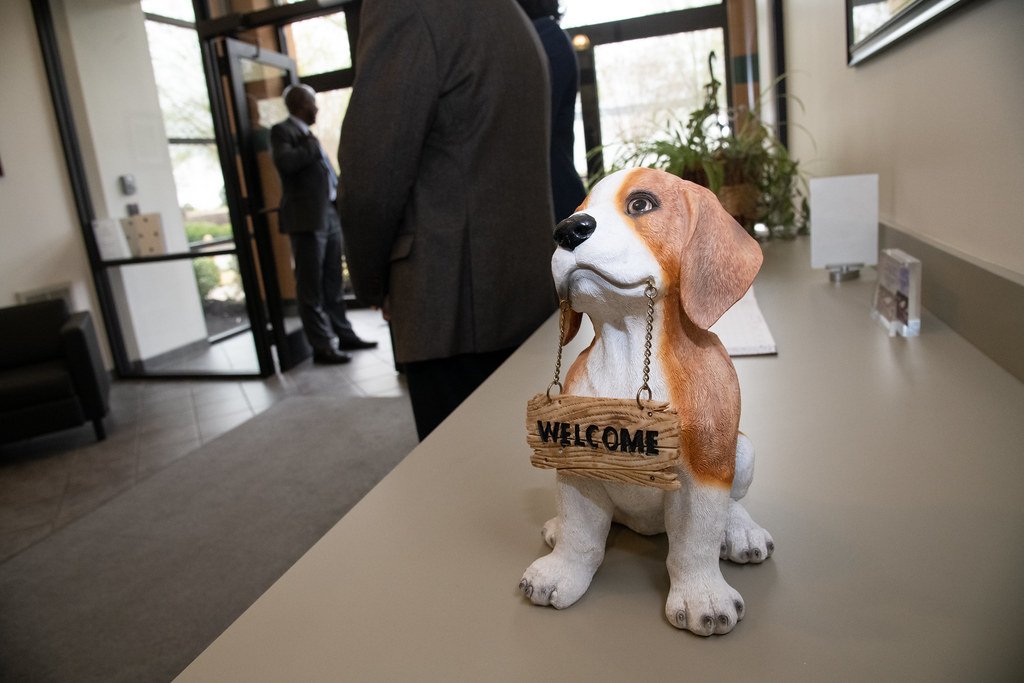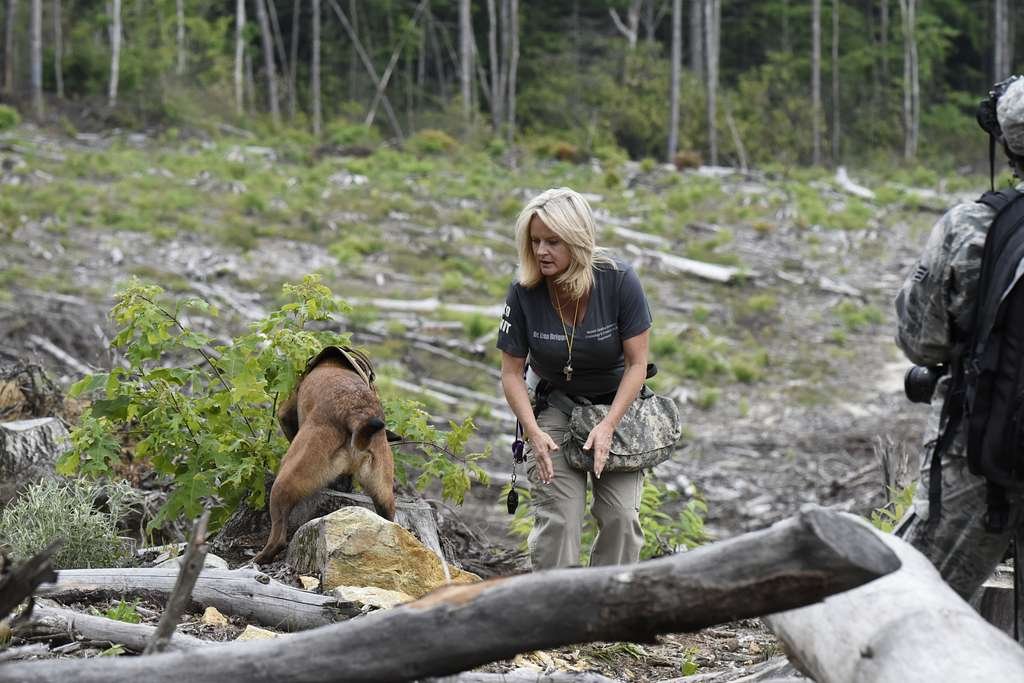You close your eyes, inhaling the heavy scent of decay that hangs in the air. The sun beats down on your back as you trek through dense underbrush, every rustle and crunch beneath your boots pulling you deeper into unexplored territory. Somewhere out there, hidden among the wilderness, lies a treasure trove of knowledge that can unlock mysteries and bring closure to those left behind. But in order to find it, you need a special kind of partner – a dog trained in cadaver search. In this article, we will delve into the intricacies of training a dog for this grueling yet vital task, exploring the techniques, challenges, and rewards of honing their olfactory senses to track down the scent of death. With patience, dedication, and a touch of creativity, you can transform your loyal companion into an invaluable asset in the search for answers.
Table of Contents
- Utilizing Scent Detection Training for Cadaver Search Dogs
- Base Training Fundamentals for Cadaver Search Dogs
- Enhancing Focus and Alertness: Developing Search Drive in Cadaver Dogs
- Establishing Effective Commands and Signaling for Cadaver Search Dogs
- Fine-tuning Training Techniques: Advanced Methods for Cadaver Scent Discrimination
- Q&A
- Key Takeaways

Utilizing Scent Detection Training for Cadaver Search Dogs
Scent detection training is an integral part of preparing cadaver search dogs for their vital role in locating human remains. These highly skilled canines rely on their superior olfactory abilities to navigate through complex environments in order to locate and identify the scent of decomposing bodies.
This specialized training involves exposing the dogs to a variety of scents associated with human remains, including decomposition gases and decomposition fluids. By gradually introducing these scents and rewarding the dogs for correct identification, they learn to associate the smell with a positive outcome, such as finding hidden remains during real-life searches.
During scent detection training, handlers implement various techniques to ensure the dogs can effectively distinguish the target scent from other distractions. These can include conducting searches in different environments, such as forests, water bodies, or rubble, and incorporating distractions or obstacles that mimic real-world scenarios. By constantly challenging the dogs and reinforcing their training, they become reliable tools in the efforts to locate missing persons or assist in criminal investigations.
- Advanced training methods: Cadaver search dogs undergo rigorous training using advanced techniques such as scent discrimination, air scenting, and trailing. These methods enhance their capabilities to detect and locate human remains even in challenging conditions.
- Collaborative efforts: The training of cadaver search dogs is typically a collaborative effort involving professional instructors, forensic scientists, and law enforcement agencies. This interdisciplinary approach ensures that the dogs receive specialized training tailored to their crucial role in investigations.
- Continual evaluation and refinement: Trainers regularly assess the performance of cadaver search dogs and make necessary adjustments to their training. This continual evaluation helps maintain the dogs’ reliability and effectiveness, enabling them to provide invaluable assistance in locating human remains.
Overall, the utilization of scent detection training for cadaver search dogs plays a crucial role in the success of search and rescue operations and criminal investigations. Their exceptional olfactory ability combined with extensive training makes them indispensable assets in locating and recovering missing persons, bringing closure to families, and aiding in the pursuit of justice.

Base Training Fundamentals for Cadaver Search Dogs
In the world of cadaver search dogs, rigorous training and solid fundamentals are crucial for success. The foundation for training these remarkable canines begins with base training, laying the groundwork for their intense and sensitive work. This essential training focuses on developing the dog’s abilities to detect and locate human remains, ensuring their vital role in forensic investigations.
During base training, several key elements are emphasized to provide a strong starting point for the dogs. These fundamentals include:
- Odor Recognition: Dogs are trained to identify the specific scent of decomposing human remains, learning to differentiate it from other smells.
- Search Patterns: By introducing various search patterns, such as grid or line searches, dogs develop the ability to cover extensive areas methodically.
- Handler Communication: Effective communication between the dog and the handler is essential, as it enables seamless collaboration during search operations.
- Proofing: Dogs undergo rigorous proofing exercises that expose them to various distractions and challenges, ensuring they remain focused on the task at hand.
The comprehensive base training program sets the stage for a cadaver search dog’s remarkable career, preparing them to work in all types of environments and respond to the ever-changing situations they may encounter. With a solid foundation, these extraordinary canines become invaluable assets in the quest for truth and justice.

Enhancing Focus and Alertness: Developing Search Drive in Cadaver Dogs
When it comes to the critical tasks performed by cadaver dogs, nothing is more crucial than their ability to maintain focus and alertness during search operations. In order to enhance these valuable traits, dog handlers and trainers employ various techniques to develop and strengthen the search drive in these remarkable canines.
First and foremost, positive reinforcement plays a vital role in molding the search drive of cadaver dogs. By utilizing rewards and praise, trainers can reinforce the connection between the dog’s successful search efforts and the desired behavior. This encourages the dog to remain focused and vigilant throughout their search, knowing that a well-executed task will be met with positive reinforcement.
- Providing regular mental and physical stimulation is also essential in developing a strong search drive. Dogs should be engaged in activities that challenge their senses and problem-solving abilities, such as scent discrimination games or obstacle courses. This interactive approach not only enhances focus but also helps to prevent boredom and maintain the dog’s alertness at a high level.
- Structured training sessions that gradually increase in complexity are another effective method for developing search drive in cadaver dogs. Starting with simple exercises and gradually incorporating more challenging tasks ensures that the dogs are continuously stimulated and motivated to perform at their best. This progressive training approach helps build confidence and sharpens the dog’s focus and alertness during search missions.
By employing these techniques and strategies, handlers and trainers can develop the search drive in cadaver dogs, elevating their focus and alertness to an exceptional level. The dedication invested in enhancing these invaluable skills ultimately contributes to the effectiveness and success of search and rescue operations involving these remarkable canines.
Establishing Effective Commands and Signaling for Cadaver Search Dogs
When it comes to training cadaver search dogs, establishing effective commands and signaling is crucial for their success in locating human remains. These dogs possess an innate ability to sniff out human scent, but proper training and clear communication with handlers are essential to their mission.
Here are some key strategies for establishing effective commands and signaling:
- Consistency: Consistency is key in training cadaver search dogs. Using the same commands and signals consistently helps dogs develop clear associations and reinforces their understanding of what is expected from them. It is important to ensure that all handlers involved in the training use the same language and signals.
- Clear cues: Clarity in commands and signals is essential for precise communication with cadaver search dogs. Handlers should use distinct vocal cues and hand signals that are easy for the dogs to understand. Simple, concise commands like “search” and “indicate” in conjunction with specific hand gestures are ideal.
- Positive reinforcement: Positive reinforcement plays a significant role in training cadaver search dogs. Rewarding desired behaviors helps to strengthen the bond between dogs and handlers and encourages dogs to perform tasks accurately. Consistent praise, treats, or playtime as rewards can motivate dogs and reinforce the effectiveness of commands and signaling.
- Ongoing training: Training for cadaver search dogs is a continuous process. Ongoing reinforcement of commands and signals ensures that dogs stay sharp and maintain their skills. Regular training sessions, even after dogs have become proficient, help to reinforce their training and keep them prepared for real-life scenarios.
To establish effective commands and signaling for cadaver search dogs, consistency, clear cues, positive reinforcement, and ongoing training are all key factors. By employing these strategies, handlers can enhance the skills of these remarkable dogs and improve their overall performance in locating human remains.
Fine-tuning Training Techniques: Advanced Methods for Cadaver Scent Discrimination
In the world of forensic science, cadaver scent discrimination plays a crucial role in solving mysteries and providing closure to families of missing individuals. However, traditional training methods have their limitations, and that is where fine-tuning training techniques step in. These advanced methods are designed to push the boundaries of cadaver scent discrimination to new heights, ensuring accuracy and efficiency in scent identification.
Enhanced Scent Differentiation:
- Advanced training techniques focus on enhancing a dog’s ability to differentiate between various scents, even in complex scenarios.
- The training incorporates a systematic approach, exposing the dog to a wide range of scents and teaching them to distinguish between similar odors.
- Through reinforcement and positive encouragement, canines are encouraged to develop a heightened sense of smell that allows them to detect even the most subtle differences in scent profiles.
Targeted Scent Detection:
- These advanced methods emphasize targeted scent detection, ensuring that canines can pinpoint specific sources of cadaver scent, even in challenging environments.
- Training incorporates realistic scenarios, simulating complex crime scenes, disaster areas, and buried remains to enhance the dog’s ability to locate hidden cadaver scent sources.
- Through specialized training exercises, dogs are taught to overcome distractions and work meticulously to locate scent samples, providing invaluable assistance in forensic investigations.
Innovative Scent Discrimination Tools:
- New technologies and tools are incorporated into fine-tuning training techniques, making the process more efficient and precise.
- From scent identification devices to training aids that replicate varying decomposition stages, these innovations empower trainers to provide canines with a diverse range of scent profiles.
- By exposing dogs to a broader spectrum of smells, their discrimination skills are honed, enabling them to excel in the identification of cadaver scents in real-world scenarios.
As the field of forensic science continues to evolve, implementing advanced training techniques for cadaver scent discrimination is vital. These methods not only enhance the capabilities of canines, but they also contribute to more accurate and effective investigations, ultimately bringing closure to countless families affected by tragedy.
Q&A
What is cadaver search training for dogs?
Cadaver search training is a specialized form of scent detection training where dogs are taught to locate human remains, such as bones or decomposing bodies. It utilizes the dog’s incredible sense of smell to assist in criminal investigations, search and rescue operations, and locating missing persons.
Do all dogs have the ability to be trained for cadaver search?
Not all dogs are suitable for cadaver search training. Breeds like Bloodhounds, German Shepherds, and Belgian Malinois are commonly used due to their exceptional sense of smell and drive to work. However, individual temperament and motivation also play a significant role in determining if a dog is fit for this type of training.
Is it necessary to start training a dog at a young age?
While starting training at a young age can be advantageous, it is not absolutely necessary. Dogs of any age can be trained for cadaver search, as long as they possess the necessary drives and physical ability. However, early socialization and basic obedience training can provide a solid foundation for later training.
How long does it typically take to train a dog for cadaver search?
The duration of training varies depending on the dog’s breed, temperament, and previous training experience. Generally, it can take anywhere from several months to a year or more to fully train a dog for cadaver search work. Consistent training sessions, regular practice, and the skills of the trainer are all factors that influence training time.
What are some basic commands essential for cadaver search training?
In cadaver search training, dogs should learn commands like “search,” “alert,” and “leave it.” These commands help dogs focus on searching for the scent, indicate when they have found a target, and teach them not to disturb other evidence. A solid foundation in obedience training is also crucial for proper control and communication during search missions.
What are some challenges faced during cadaver search training?
Cadaver search training can present challenges such as desensitizing dogs to the scent of decomposition, teaching them to work in various environments, and maintaining focus and motivation during long search missions. Additionally, trainers must constantly adapt their training techniques to suit the individual dog’s needs and abilities.
Can I train my dog for cadaver search on my own?
Training a dog for cadaver search can be complex and requires expertise. It is highly recommended to seek professional guidance from experienced scent detection trainers or join specialized training programs that focus on cadaver search. These trainers have the knowledge and skills to ensure correct training techniques are used and maximize the dog’s potential.
What are the benefits of training a dog for cadaver search?
Training a dog for cadaver search not only contributes to crime-solving and search operations but also provides an opportunity for a strong bond between the handler and the dog. The training process allows the dog to utilize their natural abilities and instincts, keeping them mentally and physically stimulated, and ultimately resulting in a rewarding partnership.
Key Takeaways
As we reach the end of this guide, we hope that you’ve found our tips and insights into training a dog for cadaver search both informative and captivating. Embarking on this remarkable journey to develop your canine companion into an adept cadaver search dog requires dedication, patience, and a genuine passion to make a difference. From mastering obedience skills to honing scent detection abilities, your partnership with your dog will grow stronger as you both delve into this extraordinary and demanding field.
Remember, training a dog for cadaver search is far more than just teaching commands and tricks. It is an artful dance between handler and canine, where trust and communication form the foundation of success. Every step you take together, every obstacle you conquer, is a testament to the incredible bond that can be forged between human and animal.
As you embark on this adventure, be prepared for some setbacks and challenges along the way. Training a cadaver search dog is no easy feat, but the rewards that await you at the end of the tunnel are immeasurable. The satisfaction of knowing that you and your faithful companion have the potential to bring closure and peace to grieving families is beyond measure.
We encourage you to continue expanding your knowledge, seeking expert guidance, and practicing diligently. Building a solid repertoire of skills takes time and effort, but every ounce of sweat and every ounce of determination will serve you well when working in the often grueling and emotionally charged field of cadaver search.
So, take a deep breath, gather your tools, and begin this remarkable journey that will test your limits and redefine the depths of your connection with your four-legged partner. Embrace the challenges, celebrate the victories, and never forget the purpose behind your endeavor – to provide closure, solace, and the gift of answers to those yearning for them.
In the end, as dusk settles on the vast landscape of your efforts, remember that you are not alone. Countless handlers and their remarkable canine counterparts have paved the way before you, leaving behind a legacy of unwavering devotion and remarkable achievements. Together, we can illuminate the darkest corners, uncover the hidden secrets, and bring comfort to those in need.
So go forth, train diligently, and transform your loyal companion into an extraordinary cadaver search dog. The path may be challenging, but the impact you can make is undoubtedly profound.
As an affiliate, my content may feature links to products I personally use and recommend. By taking action, like subscribing or making a purchase, you’ll be supporting my work and fueling my taco cravings at the same time. Win-win, right?
Want to read more? Check out our Affiliate Disclosure page.